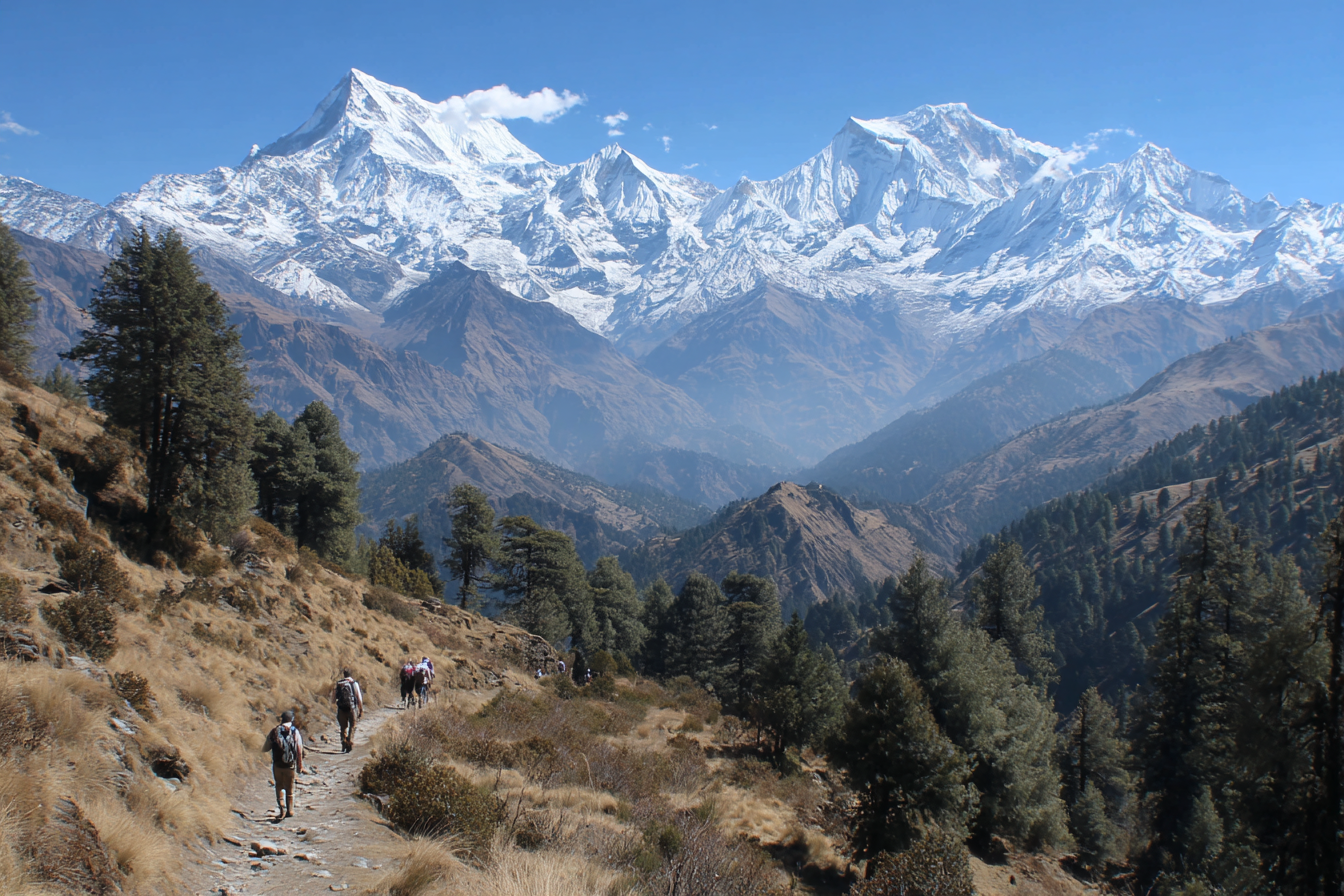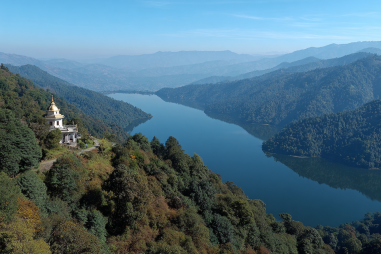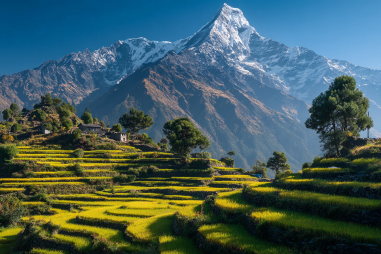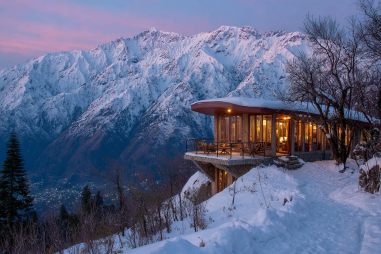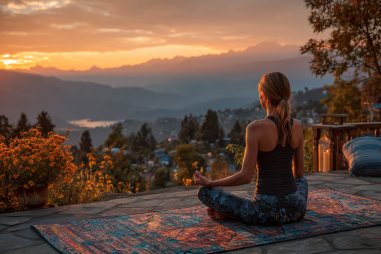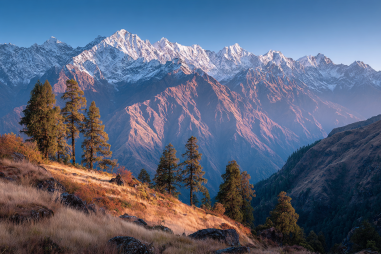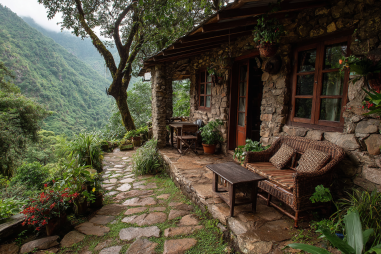Nepal is a dream destination for trekking enthusiasts around the world. Home to some of the most spectacular mountain landscapes on Earth, including the majestic Himalayas, Nepal offers a rich tapestry of trails that combine natural beauty, adventure, and vibrant cultural experiences. Whether you’re an experienced trekker or a first-timer, exploring Nepal’s trekking routes promises an unforgettable journey filled with stunning vistas, challenging paths, and warm Himalayan hospitality. This guide aims to provide you with all the essential information you need to plan your trekking adventure, from choosing the right trail to packing smartly and staying safe along the way.
Popular Trekking Routes in Nepal
Nepal’s trekking trails cater to various skill levels and interests, but a few have earned international fame for their breathtaking scenery and unique cultural experiences. Here are three of the most popular routes:
Everest Base Camp Trek
The Everest Base Camp Trek is arguably the most iconic trekking route in Nepal. It takes you through rugged terrain to the foot of the world’s highest peak, Mount Everest. Along the way, trekkers pass through Sherpa villages like Namche Bazaar and Tengboche, where vibrant Buddhist monasteries offer insight into local traditions. The trail offers stunning views of Everest, Lhotse, Nuptse, and other towering giants. The trek typically takes around 12-14 days, including acclimatization days to help prevent altitude sickness.
Annapurna Circuit Trek
The Annapurna Circuit is a diverse and challenging trek that showcases Nepal’s varied landscapes—from subtropical lowlands to high mountain passes. This loop trek usually takes about 15-20 days and covers about 160-230 kilometers, depending on the route taken. Trekkers enjoy views of Annapurna South, Annapurna I, Dhaulagiri, and Machapuchare, along with fascinating stops in hill towns and villages inhabited by Gurung and Thakali ethnic groups. The Thorong La Pass at 5,416 meters is a highlight and the highest point of the circuit.
Langtang Valley Trek
For those seeking a shorter and less crowded trek, the Langtang Valley Trek is an excellent option. It takes roughly 7-10 days and ventures into the serene Langtang National Park. This trek features beautiful rhododendron forests, glacial views, and Tibetan Buddhist culture. Trekkers will visit the picturesque village of Langtang and possibly ascend to viewpoints like Tserko Ri for panoramic vistas.
When to Go: Best Seasons for Trekking
Timing your Nepal trek is crucial to enjoying the best possible weather and trail conditions. The two most popular trekking seasons are spring (March to May) and autumn (late September to November).
- Spring: Offers warm weather, clear skies, and blooming rhododendrons. It’s a fantastic time for those who want to enjoy wildflowers and moderate temperatures.
- Autumn: Known for stable weather, clear mountain views, and pleasant temperatures. This is considered the prime trekking season.
Winter (December to February) can be cold with occasional snowfall, especially at higher elevations, making trekking more challenging but rewarding for experienced adventurers. Monsoon season (June to August) generally sees heavy rainfall, landslides, and slippery trails, so most trekkers avoid these months unless you are prepared for wet conditions and fewer crowds.
Essential Permits and Regulations
Trekking in Nepal requires obtaining the correct permits to protect the environment and support local communities. The specific permits depend on the trekking region and route you choose:
- TIMS Card (Trekkers’ Information Management System): Mandatory for most trekking routes, TIMS helps track trekkers and ensure their safety.
- National Park or Conservation Area Permits: For example, the Sagarmatha National Park permit is required for Everest treks, and the Annapurna Conservation Area Permit (ACAP) is needed for the Annapurna Circuit.
These permits are relatively affordable and can be arranged in Kathmandu, Pokhara, or at designated trailhead offices. Always carry your permits and identification while trekking, as you will be checked at checkpoints.
Gear and Packing Tips
Packing smartly is essential for a successful trekking experience. Nepal’s terrain and variable weather call for versatile gear that keeps you comfortable and safe. Here’s a list of essentials to consider:
- Clothing: Layering is key. Pack moisture-wicking base layers, insulating mid-layers such as fleece or down jackets, and a waterproof outer shell. Don’t forget warm hats, gloves, and thermal socks.
- Footwear: Durable trekking boots with good ankle support and a solid grip are a must. Consider bringing camp shoes or sandals for evenings.
- Backpack: A 40-60 liter backpack with a rain cover is ideal for day and multi-day treks.
- Sleeping gear: A good-quality sleeping bag rated for cold temperatures is important, especially on higher altitude treks.
- Other essentials: Trekking poles, sunscreen, sunglasses, water bottle or hydration system, headlamp, first aid kit, and any personal medications.
Most trekking lodges (teahouses) provide basic accommodation and meals, so you won’t need to carry bulky cooking gear or food supplies unless you prefer to self-cater on more remote routes.
Health and Safety on the Trail
Health and safety should be a top priority when trekking in Nepal’s mountains. Altitude sickness is a common concern, so take time to acclimatize and recognize symptoms such as headaches, nausea, dizziness, or shortness of breath. It’s important to climb gradually, stay hydrated, and avoid alcohol on the trail.
Carry a well-stocked first aid kit and consider bringing medications like Diamox as prescribed by a healthcare provider. Also, travel insurance with coverage for trekking and emergency evacuation is strongly recommended.
Trail safety includes sticking to designated paths, being cautious on slippery or uneven terrain, and staying updated on weather conditions. Hiring experienced guides can improve safety and help navigate challenging sections.
Cultural Experiences Along Trekking Routes
One of the most enriching aspects of trekking in Nepal is immersing yourself in the diverse cultures of the Himalayan people. Along popular routes, you’ll encounter Sherpas near Everest, Gurungs and Thakalis in Annapurna, and Tamangs in Langtang. Visiting monasteries, local markets, and festivals offers unique insights into their customs, beliefs, and way of life.
Be respectful of local traditions, seek permission before photographing people, and support community-run lodges and businesses. Engaging with locals not only enriches your experience but also helps sustain the cultural heritage of these mountain communities.
Hiring Guides and Porters
While some trekkers prefer to go independently, hiring a guide and porters can make your Nepal trekking adventure safer and more enjoyable. Guides offer valuable expertise on trail navigation, acclimatization tips, and cultural interpretation. Porters help carry heavy loads, easing your physical burden and allowing you to fully enjoy the trek.
When hiring guides and porters, seek those registered with official agencies or trekking associations to ensure professionalism and fair treatment. Always agree on wages beforehand and consider tipping based on service quality at the end of your trek.
Sample Trekking Itineraries
To give you a practical idea, here are brief sample itineraries for different trekking durations and difficulty levels:
Everest Base Camp Trek (14 Days)
- Day 1: Arrival in Kathmandu
- Day 2: Fly to Lukla, trek to Phakding
- Day 3-5: Trek to Namche Bazaar and acclimatization
- Day 6-10: Ascend through Tengboche, Dingboche, Lobuche to Everest Base Camp
- Day 11-13: Return trek via same route to Lukla
- Day 14: Fly back to Kathmandu
Annapurna Circuit Trek (18 Days)
- Day 1: Arrival in Pokhara
- Day 2-4: Drive to trailhead and trek through villages to Manang
- Day 5-7: Acclimatization and exploration around Manang
- Day 8: Cross Thorong La Pass
- Day 9-14: Descend towards Muktinath and Tatopani, continue to Nayapul
- Day 15: Drive or trek to Pokhara
- Day 16: Rest in Pokhara
- Day 17: Return to Kathmandu
Langtang Valley Trek (8 Days)
- Day 1: Kathmandu to Syabrubesi
- Day 2-6: Trek through Langtang village to Kyanjin Gompa
- Day 7: Return trek to Syabrubesi
- Day 8: Drive back to Kathmandu
Getting Ready for Your Nepal Trekking Adventure
Trekking in Nepal offers an incredible opportunity to witness some of the world’s most awe-inspiring scenery while engaging with vibrant mountain cultures. With the right preparation—choosing your trail, understanding the seasons, securing permits, packing appropriately, and prioritizing health and safety—you can make your journey both safe and memorable.
Remember to respect the natural environment and local traditions, and consider supporting local guides and porters to help sustain their livelihoods. Whether you’re trekking to Everest Base Camp, circling Annapurna, or exploring the peaceful Langtang Valley, Nepal’s majestic Himalayas promise an adventure that will stay with you for a lifetime.

